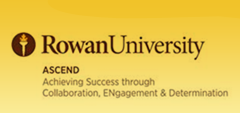Location
Room 221C, Chamberlain Student Center
Start Date
13-2-2020 9:45 AM
End Date
13-2-2020 10:45 AM
Document Type
Presentation
Description
This presentation explores and celebrates the strengths of students who find themselves at the merger of being first generation and low income identities, and the role of having staff members who've either lived the experience or seek to embrace students living this truth. Considering the increase in students with these identities on campus nationally (33% of students on average), it behooves us to shift perspectives away from deficits and celebrate the skill sets that students bring to our campuses. Using Yosso's (2005) Community Cultural Wealth Model, this presentation seeks to highlight the strengths students bring to our campuses and the role of administrators/faculty in supporting these students. Further, the presentation walks through a student's story with capital in various forms like: 1) Allowing space for them to be themselves (authenticity and safety), 2) Providing critical feedback for navigating the institution (linguistic, navigational capital), 3) Access to resources and institutional knowledge (social capital), 4) Recognizing the role or lack thereof familial ties (familial capital), and 5) Forethought, planning, and resiliency (aspirational capital). By the end of the presentation, we hope students and staff alike, gain some insightful knowledge and interrupt how we typically frame first generation and low income student experiences.
Included in
Positing Strength: Shifting Perspective & Focus on Low-Income, First-Generation Students' Experiences
Room 221C, Chamberlain Student Center
This presentation explores and celebrates the strengths of students who find themselves at the merger of being first generation and low income identities, and the role of having staff members who've either lived the experience or seek to embrace students living this truth. Considering the increase in students with these identities on campus nationally (33% of students on average), it behooves us to shift perspectives away from deficits and celebrate the skill sets that students bring to our campuses. Using Yosso's (2005) Community Cultural Wealth Model, this presentation seeks to highlight the strengths students bring to our campuses and the role of administrators/faculty in supporting these students. Further, the presentation walks through a student's story with capital in various forms like: 1) Allowing space for them to be themselves (authenticity and safety), 2) Providing critical feedback for navigating the institution (linguistic, navigational capital), 3) Access to resources and institutional knowledge (social capital), 4) Recognizing the role or lack thereof familial ties (familial capital), and 5) Forethought, planning, and resiliency (aspirational capital). By the end of the presentation, we hope students and staff alike, gain some insightful knowledge and interrupt how we typically frame first generation and low income student experiences.


